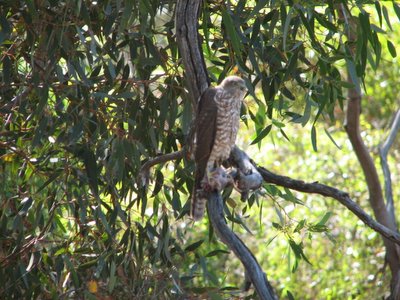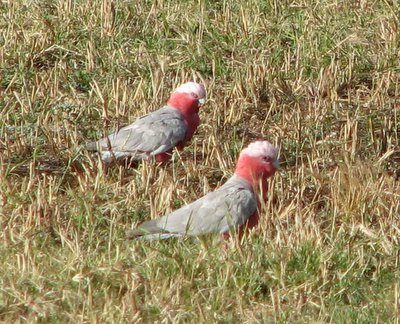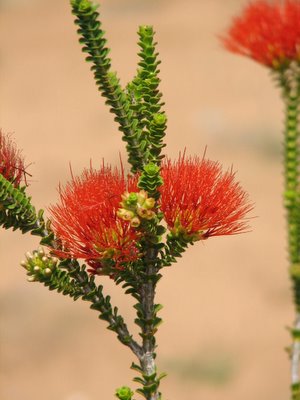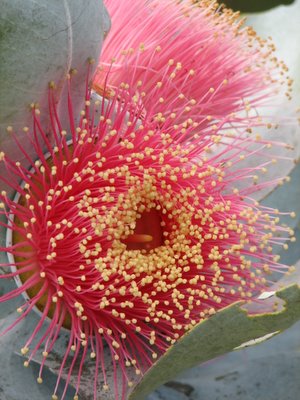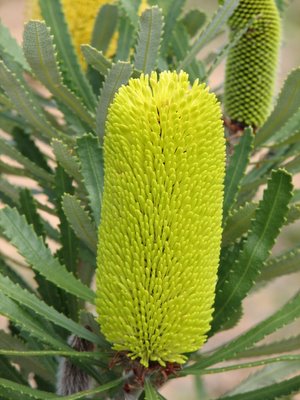Collared Sparrowhawk
I haven’t updated my blog since late last year. I have been overseas for much of January, first in Thailand and then trekking in Nepal. Soon I will be writing a separate blog for that trip. Watch out for some amazing photography.
In the meantime, the bird life around home continues to delight. Just a short while ago while I was reading today’s paper I looked up to see a Collared Sparrowhawk in a tree just outside our sun room. I took one photograph through the window but this was not very satisfactory because the bird was sitting on a branch at least 30 metres away.
I went outside and crept closer, photographing every few metres. I was eventually able to creep to within five metres. Even though this species is regularly seen in our garden, this is the first time I have had the opportunity to get good shots of one. The individual here is an immature. I didn’t manage to see what it was eating. It may have been a House Sparrow. It flew off with the evidence.
Galahs in the morning sun
On my morning walks through the mallee scrubland and the nearby farming land I often come across or hear the beautiful Australian parrot, the Galah. This species is very common throughout most of Australia. They can often be observed in pairs or small flocks and occasionally very large flocks numbering several hundred.
On recent morning walks I have seen about 4 to 8 Galahs sitting on top of several wattle bushes (Acacia spp) on the side of the road I walk along. They are usually busy eating the seeds. The rising sun catches the brilliant colours of the breast feathers, lighting up the dull green leaves of the bush. On too many occasions I have not had my camera with me.
Yesterday I tried to creep up to get a good photograph. This little flock was very wary and flew off to some nearby mallee trees. I was able to zoom in sufficiently to get a reasonable shot of one of them.
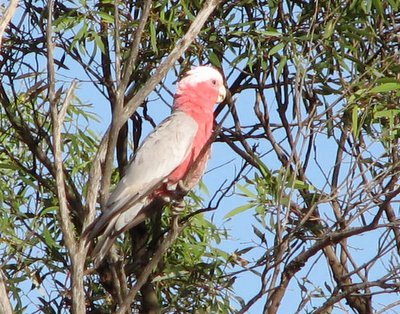
In the paddock opposite there a few more Galahs busily searching for seeds in the grasses in the field. This is a common sight in Australian paddocks. Sometimes the ground seems to turn pink as hundreds of Galahs swoop down to the ground looking for a meal.
Lorikeets, Parrots and Wattlebirds
This evening I was attracted by some birds calling outside. I went to investigate, thinking that they were probably Rainbow Lorikeets. I didn’t take my camera with me.
Sure enough, I had some good views of two Rainbow Lorikeets in the tree next to our driveway. The seeting sun was lighting up the brilliant colours of one of them. I needed my camera. It was still inside.
I casually walked inside trying not to scare the birds away by sudden movements. On emerging with the camera the lorikeets had disappeared – of course! Instead, I was content to get some very good shots of a Red Wattlebird in the setting sun in the same tree. It almost seemed like he was posing for me.
Perhaps the lorikeets had persuaded him to pose for them, because as I walked inside, they emerged from a nearby tree and flew a sortie overhead, screeching their taunts at me. One day, one day I’ll get a good shot of them.
Rainbow Lorikeets are quite common throughout the urban areas of Murray Bridge but we only occasionally see them on our home block on the outskirts of the city. In recent weeks they have been daily visitors. This indicates that there has to be enough plants flowering around here to attract these beautiful, but noisy, birds.
On this morning’s walk a had good views of two Elegant Parrots. This beautiful species is widespread in this area but they are not common anywhere. I also saw a single Adelaide Rosella. These are common in the Adelaide region and this is the eastern extent of their range and are uncommon in Murray Bridge. If I’d had my camera with me I would have been able to get an excellent photograph of a Rainbow Bee-eater sitting on a gate in the early morning sun.
Tomorrow.
Tomorrow – I’ll take my camera on my walk.
Pangarinda Arboretum, Wellington, South Australia

This morning we travelled down river through Tailem Bend to the small town of Wellington, South Australia. This town is near the end of the River Murray where it flows into Lake Alexandrina. From this lake it flows into the Coorong and out to the Southern Ocean.
Just east of the river at Wellington is the Pangarinda Arboretum. This consists of a plantation of Australian native plants established over a decade ago by local members of the Australian Plant Society (APS). The plantation has been planted in sections to represent different plant regimes from different parts of Australia.
Today’s gathering of members of APS was for a special Christmas lunch for members of the three local branches of APS. Members came from the Murray Bridge, Parrakie and Karoonda groups. Also present were members of the family of Ross Foreman who celebrates his 80th birthday tomorrow. Ross and his late wife Pat have been long time members of APS and they have freely given hundreds of volunteer hours of work to the arboretum. After cutting the birthday cake we all moved to another section of the plantation for Ross to open the Foreman Gazebo. This looks over the arboretum to the east and the river to the west.
After the ceremony we all wandered around the plantings looking at the many flowering plants. Some had finished their spring flowering but others, like the banksias, were resplendant in a variety of shapes and colours.
The bird watching was quite good too, with 22 species recorded, despite all the people wandering around. I managed to get some very good flower shots and one good photograph of a thornbill. The following is a list of the birds seen:
White Faced Heron
Pacific Black Duck
Nankeen Kestral
Swamp Harrier
Black Kite
White Ibis
Rock Dove
Peaceful Dove
Crested Pigeon
Galah
Elegant Parrot
Singing Honeyeater
New Holland Honeyeater
Magie Lark
Australian Magpie
Yellow Rumped Thornbill
Common Starling
House Sparrow
Common Blackbird
European Goldfinch
Willie Wagtail
One of the members who regularly does volunteer work there reported to me that Zebra Finches had been breeding in the plantation recently.
New Holland Honeyeaters
New Holland Honeyeaters are a common Australian bird, especially in parks and gardens. Good views of them can be easily had as they flit to and fro from bush to bush. Sometimes they even sit still enough for good views of their beautiful markings. On rare occasions they even sit long enough to capture a photograph!
This stunning photograph was taken a few days ago while looking over our neighbour’s fence. The bird posed long enough for me to take several shots. The green object it is perched on is the handle of a small hand operated plough. Our neighbour has several old farm implements in his front garden.
Over the years I have been interested in the occurrence of New Holland Honeyeaters in our garden. They are probably the most numerous and widespread species of honeyeater in the Murray Bridge region. In the first 15 years of us living here they were only occasional visitors to our garden and patch of mallee scrub. I have kept monthly records of all birds seen on our property since January 1985. My database of bird observations (BirdInfo – which is no longer available) shows a sudden increase of observations in late 1998. From that time to the present New Holland Honeyeaters have been the predominant honeyeater species here.
Other species of honeyeaters recorded here include:
Red Wattlebird: resident, breeding species.
White Plumed Honeyeater (resident, breeding)
Spiny Cheeked Honeyeater (resident, breeding)
Striped Honeyeater (occasional visitor, one breeding record)
White-Eared Honeyeater (occasional visitor)
Yellow Plumed Honeyeater (occasional visitor)
Singing Honeyeater (resident, breeding)
Brown-Headed Honeyeater (resident, breeding).
You can find photos of many of these honeyeater species, including photos, by searching on this site, or clicking on the species name (not all have links).
One possible explanation of this change is the maturing of many of the native Australian plants we have planted over the years. Our property is now far more bird welcoming than, say 15 years ago.
Update: this post was updated on November 5th, 2013.
